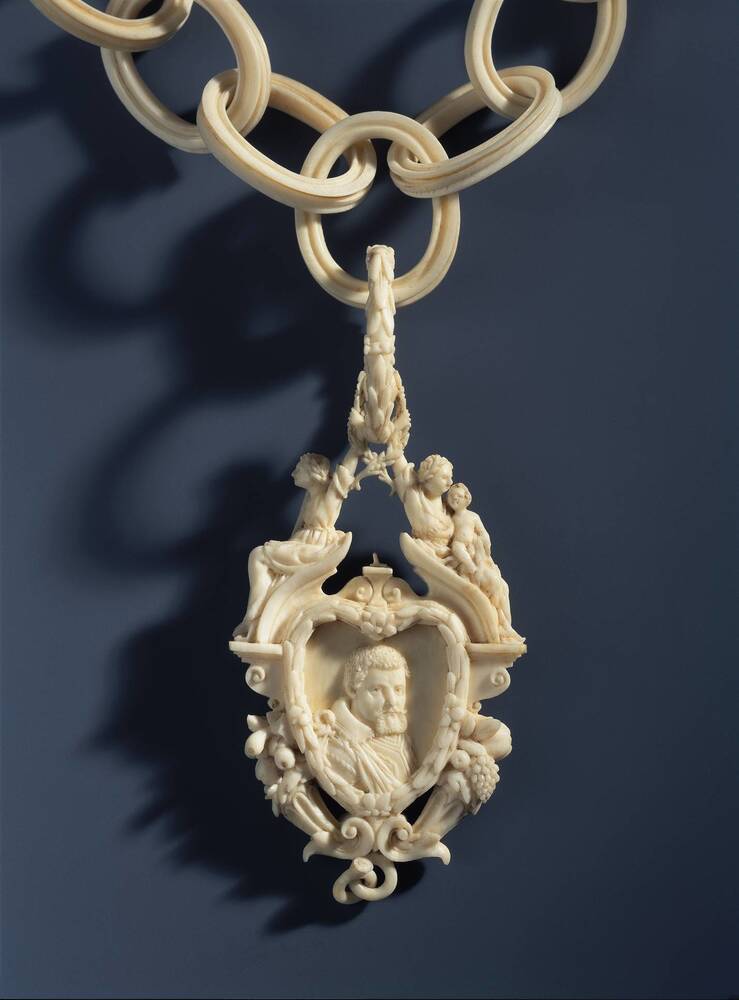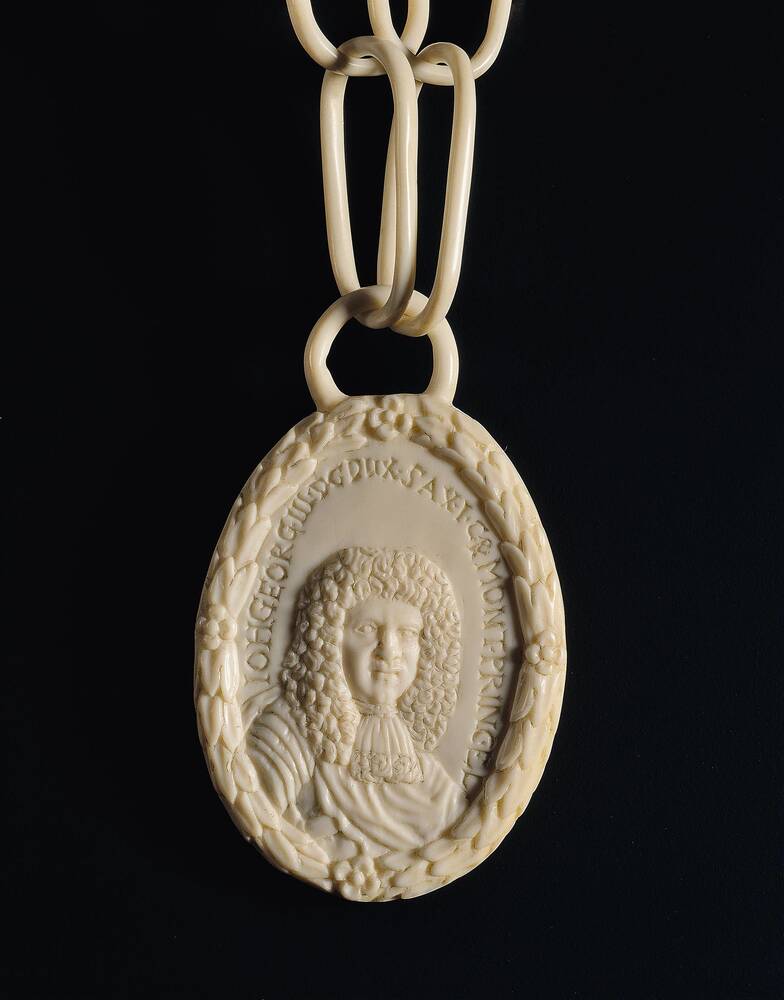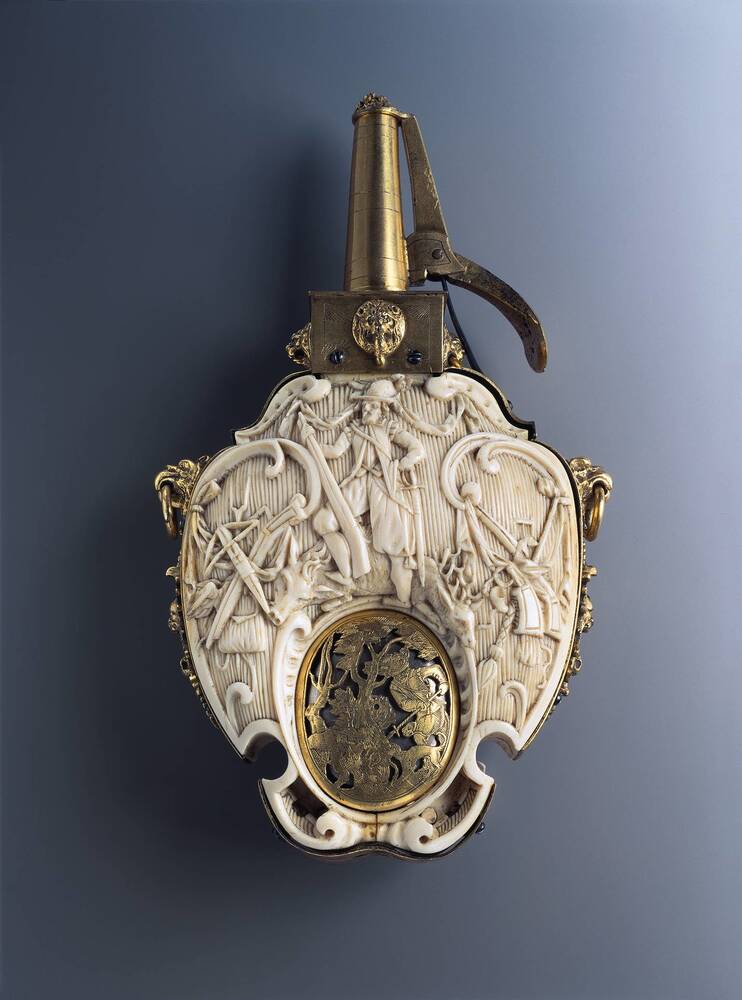In this glass case you can see a number of ivory chains. Necklaces like these, with a portrait, were very popular in the seventeenth century. The portraits of rulers were often made of precious materials.
On the left, you see a portrait of Johann Georg the First, made by Jacob Zeller. You saw Zeller’s ivory frigate earlier in this exhibition and already know what a master craftsman he was! Making a chain with a number of links was a very complicated process. First, Zeller roughed out the medallion and links on a lathe – from a single tusk. Then he carved the portrait and separated the links with a fret-saw, so that they were able to move freely inside each other.
By commissioning this portrait and chain, Johann Georg the First started a family tradition. Throughout the seventeenth century, the Electors commissioned these ivory chains with their likenesses.
According to the Kunstkammer inventory, the portrait of Johann Georg the Second, which you see second from the right in this case, was carved by a “Dutchman”. Perhaps it’s the work of Jean Mansel from Dieppe, who fled to the Netherlands to escape religious persecution in France. He may also have come to Dresden and made this portrait of the Elector while he was here. We don’t know very much about Mansel’s life – apart from the fact that he was one of the finest carvers of medallions.



